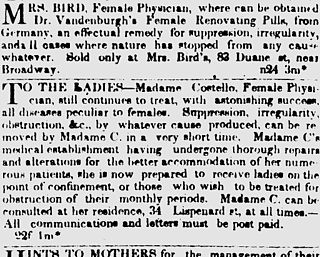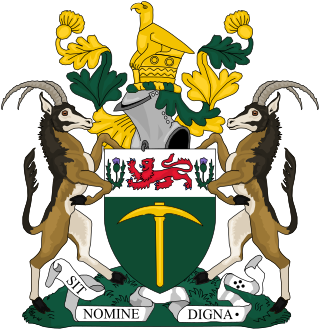
Abortion in the United Kingdom is de facto available under the terms of the Abortion Act 1967 in Great Britain and the Abortion (No.2) Regulations 2020 in Northern Ireland. The procurement of an abortion remains a criminal offence in Great Britain under the Offences Against the Person Act 1861, although the Abortion Act provides a legal defence for both the pregnant woman and her doctor in certain cases. Although a number of abortions did take place before the 1967 Act, there have been around 10 million abortions in the United Kingdom. Around 200,000 abortions are carried out in England and Wales each year and just under 14,000 in Scotland; the most common reason cited under the ICD-10 classification system for around 98% of all abortions is "risk to woman's mental health."
Abortion in Ireland is regulated by the Health Act 2018. Abortion is permitted in Ireland during the first twelve weeks of pregnancy, and later in cases where the pregnant woman's life or health is at risk, or in the cases of a fatal foetal abnormality. Abortion services commenced on 1 January 2019, following its legalisation by the aforementioned Act, which became law on 20 December 2018. Previously, the 8th Constitutional Amendment had given the life of the unborn foetus the same value as that of its mother, but the 36th constitutional amendment, approved by referendum in May 2018, replaced this with a clause permitting the Oireachtas (parliament) to legislate for the termination of pregnancies.

Abortion in Canada is legal throughout pregnancy and is publicly funded as a medical procedure under the combined effects of the federal Canada Health Act and provincial health-care systems. However, access to services and resources varies by region. While some restrictions exist, Canada is one of the few nations with no criminal restrictions on abortion. Abortion is subject to provincial healthcare regulatory rules and guidelines for physicians. No provinces offer abortion on request at 24 weeks and beyond, although there are exceptions for certain medical complications.

Abortion laws vary widely among countries and territories, and have changed over time. Such laws range from abortion being freely available on request, to regulation or restrictions of various kinds, to outright prohibition in all circumstances. Many countries and territories that allow abortion have gestational limits for the procedure depending on the reason; with the majority being up to 12 weeks for abortion on request, up to 24 weeks for rape, incest, or socioeconomic reasons, and more for fetal impairment or risk to the woman's health or life. As of 2022, countries that legally allow abortion on request or for socioeconomic reasons comprise about 60% of the world's population.
Abortion in Sweden was first legislated by the Abortion Act of 1938. This stated that an abortion could be legally performed in Sweden upon medical, humanitarian, or eugenical grounds. That is, if the pregnancy constituted a serious threat to the woman's life, if she had been impregnated by rape, or if there was a considerable chance that any serious condition might be inherited by her child, she could request an abortion. The law was later augmented in 1946 to include socio-medical grounds and again in 1963 to include the risk of serious fetal damage. A committee investigated whether these conditions were met in each individual case and, as a result of this prolonged process, abortion was often not granted until the middle of the second trimester. As such, a new law was created in 1974, stating that the choice of an abortion is entirely up to the woman until the end of the 18th week.
Therapeutic Abortion Committees were committees established under the Canadian Criminal Code. Each committee consisted of three medical doctors who would decide whether a request for an abortion fit within the exception to the criminal offence of procuring a miscarriage, i.e. performing an abortion. The Criminal Code only permitted lawful abortion if continuation of a pregnancy would cause a woman medical harm, as certified by a TAC. The TACs were almost always composed of men, due to fewer women practicing medicine and even fewer having these types of high level positions. These restrictions on abortion were struck down as unconstitutional by the Supreme Court of Canada in its decision in R v Morgentaler in 1988.

Attorney General v X, [1992] IESC 1; [1992] 1 IR 1, was a landmark Irish Supreme Court case which established the right of Irish women to an abortion if a pregnant woman's life was at risk because of pregnancy, including the risk of suicide.
Murder is an offence under the common law of England and Wales. It is considered the most serious form of homicide, in which one person kills another with the intention to cause either death or serious injury unlawfully. The element of intentionality was originally termed malice aforethought, although it required neither malice nor premeditation. Baker, chapter 14 states that many killings done with a high degree of subjective recklessness were treated as murder from the 12th century right through until the 1974 decision in DPP v Hyam.

The practice of induced abortion—the deliberate termination of a pregnancy—has been known since ancient times. Various methods have been used to perform or attempt abortion, including the administration of abortifacient herbs, the use of sharpened implements, the application of abdominal pressure, and other techniques. The term abortion, or more precisely spontaneous abortion, is sometimes used to refer to a naturally occurring condition that ends a pregnancy, that is, to what is popularly called a miscarriage. But in what follows the term abortion will always refer to an induced abortion.

R v Davidson, also known as the Menhennitt ruling, was a significant ruling delivered in the Supreme Court of Victoria on 26 May 1969. It concerned the legality of abortion in the Australian state of Victoria. The ruling was not the end of the case, but rather answered certain questions of law about the admissibility of evidence, so as to allow the trial to proceed.
Joan Graeme Malleson was an English physician, specialist in contraception and prominent advocate of the legalisation of abortion.
Aleck William Bourne was a prominent British gynaecologist and writer, known for his 1938 trial, a landmark case, in which he was prosecuted for performing a termination of pregnancy on a 14-year-old rape victim. He was subsequently charged with procuring an illegal abortion but was acquitted. He later became an anti-abortion activist.
In Trinidad and Tobago, abortion is illegal save for few exceptions. The respective laws are in place since 1925.
Child destruction is the name of a statutory offence in England and Wales, Northern Ireland, Hong Kong and in some parts of Australia.
Abortion in Zimbabwe is available under limited circumstances. Zimbabwe's current abortion law, the Termination of Pregnancy Act, was enacted by Rhodesia's white minority government in 1977. The law permits abortion if the pregnancy endangers the life of the woman or threatens to permanently impair her physical health, if the child may be born with serious physical or mental defects, or if the fetus was conceived as a result of rape or incest. Nevertheless, an estimated 70,000+ illegal abortions are performed in Zimbabwe each year, resulting in around 20,000 maternal deaths.
Foeticide, or feticide, is the act of killing a fetus, or causing a miscarriage. Definitions differ between legal and medical applications, whereas in law, feticide frequently refers to a criminal offense, in medicine the term generally refers to a part of an abortion procedure in which a provider intentionally induces fetal demise to avoid the chance of an unintended live birth, or as a standalone procedure in the case of selective reduction.

Abortion-rights movements, also self-styled as pro-choice movements, advocate for the right to have legal access to induced abortion services including elective abortion. They seek to represent and support women who wish to terminate their pregnancy without fear of legal or social backlash. These movements are in direct opposition to anti-abortion movements.
Abortion in Uganda is illegal unless performed by a licensed medical doctor in a situation where the woman's life is deemed to be at risk.
Abortion law in Saint Kitts and Nevis, a country in the West Indies and a member of the Commonwealth of Nations, is modelled on British legislation. Abortion is permitted in circumstances where a woman's life is threatened by pregnancy.

The Termination of Pregnancy Act is a law in Zimbabwe governing abortion. Enacted in 1977 by the Parliament of Rhodesia and effective starting 1 January 1978, it was retained after Zimbabwe's independence in 1980. The law expanded abortion access, permitting it under three circumstances: if the pregnancy endangers the life of the woman or threatens to permanently impair her physical health, if the child may be born with serious physical or mental defects, or if the fetus was conceived as a result of rape or incest.











